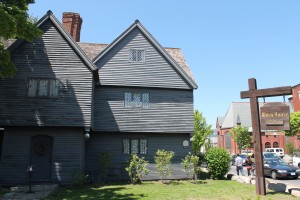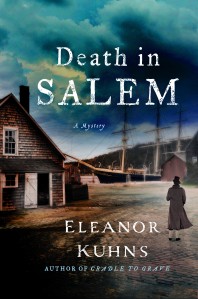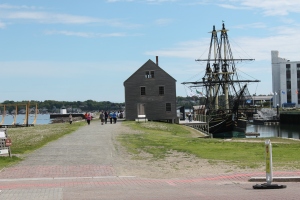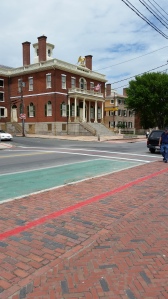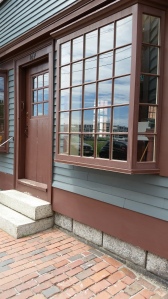I ‘ve had a couple of questions about my most recent book, Death in Salem. Why didn’t I fully explore the witchcraft angle? Well, as I’ve said in earlier posts, Salem by 1797, was a very cosmopolitan city. It was not only the sixth largest, one of the most diverse (with the first East Indian immigrant populations in the US) but it was also the wealthiest. Salem’s witchcraft past was more an embarrassment.
House of one of the judges.
The witchcraft spell has never completely left Salem, however. On one of our tours, the guide was the descendent of one of the accused witches. Reminders of this past abound.
Graveyard includes memorials to those that were executed.
Although Salem became something other – a huge center of shipping and trading, however, the belief in witchcraft did not fade. In an earlier blog I wrote about trials that continued, right up to one in Russia in 1999.
And I wonder what is behind these accusations? Belief? Greed, malice, revenge? Hatred of women. With Gamer gate and all of the Internet attacks on women we certainly cannot discount that as a motive.
Christianity certainly plays a part.I think most of us are familiar with the quote from the Bible about not suffering a witch to live. During the middle ages and right up to modern times this has been used to execute any number of innocent people, primarily women.
I will blog in the future about my research into witchcraft and goddesses – I think the two are tied. I decided, that since I did not explore witchcraft and the psychologies behind it in Death in Salem, I would do so in the next book. That book, titled The Devil”s Cold Dish, will be coming out next year. Spoiler alert: it does not take place in Salem.

